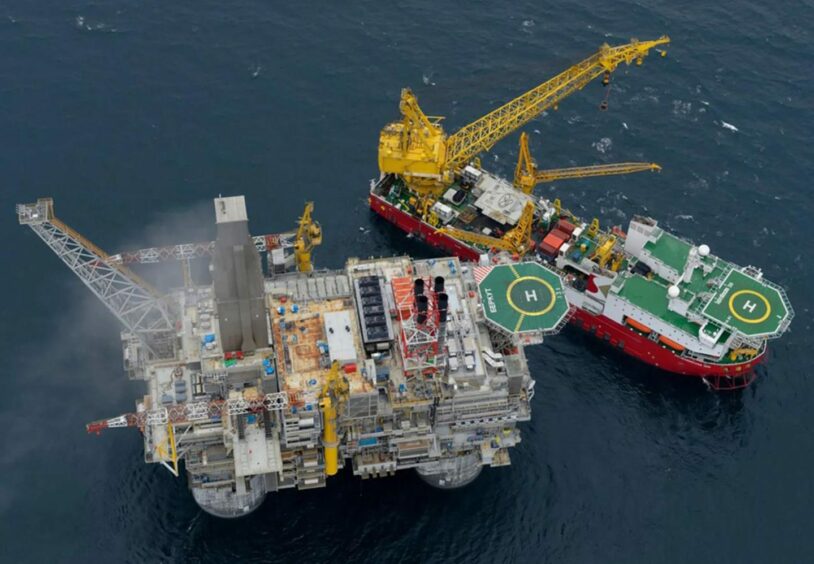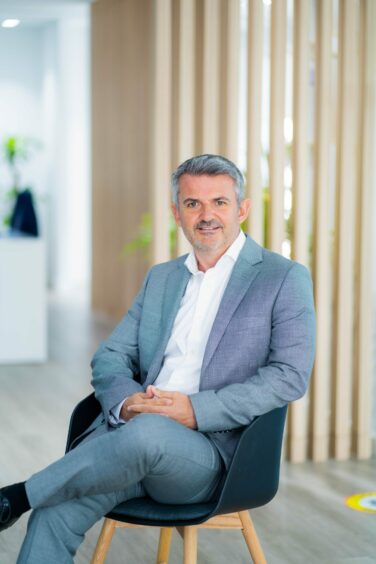
In the ever-evolving energy industry, mergers and acquisitions (M&A) have become a common strategy for companies aiming to expand their market presence, achieve synergies, or drive growth.
However, statistics paint a grim picture, with 70-90% of M&A deals failing to meet expectations, according to most recent studies. Against this backdrop of cautionary tales, Kent embarked upon their large-scale integration, which has turned into a remarkable success story amidst the prevailing trend of disappointment.
In July 2021, Kentech acquired the oil and gas business of SNC-Lavalin, including their previous acquisitions of Atkins oil and gas and low carbon business, Kentz and Houston Offshore Engineering, leading to the birth of Kent.
Two years on, Kent has seen admirable staff retention rates and extraordinary revenue growth.
Two people at the centre of making this acquisition successful were Damian O’Gara, Kent’s Chief Digital & Information Officer and Killian Coleman, Kent’s internally appointed Integration Management Office Director.
Throughout the journey, they had their sights firmly set on two key areas of integration success: Culture and Technology.
Mergers and acquisitions often include the complete purchase of one company by another, but in the Kent example, it was a carve-out. In a full acquisition, the acquiring business can leave the acquired business operating on its existing technological platforms. Kent didn’t have that luxury.
To give some insight into the enormity of that task, 7,000 employees were carved out from the wider SNC-Lavalin Group, plus over 40 legal entities from 20 regions.
Over 5,000 technology users were migrated to the Kent network, and over 40 IT systems, applications and programs were migrated into Oracle Fusion, the chosen ERP platform.
The team worked within an 18-month Transitional Services Agreement with SNC-Lavalin to manage the transition of services, which meant restricted timeline flexibility for such a complex transition.
The separation from SNC-Lavalin is complete, and the team at Kent are reflecting on why and how the programme was delivered, not without pain, but ultimately successfully.
Here are 8 key tips for anyone else about to embark on a similar journey.
1. Determine your guard rails
Establishing guiding principles at the start of a programme like this can act as guardrails throughout delivery. For Kent, these included:
- Separation over transformation
- Configuration over customisation
- Infinite thinking when problem solving
- Zero impact to business operations
In other words, get integration done in the smartest way possible without any risk to operations.
2. Enterprise Architecture
Large-scale acquisitions provide the opportunity to synthesise systems, de-duplicate systems and filter redundant systems. Getting this right early on mitigates transformation complexities and costs down the line.
Kent had an established platform, but the acquisition posed the challenges of migrating the inherited legacy systems into the target environment and focussing on standardisation and harmonisation.
3. Look after each other
Large-scale integration is challenging! Strong relationships help you navigate the unavoidable hard yards.
This means a keen focus on fostering trust within the teams working on the integration across the rest of the organisation and developing confidence with any external parties involved or impacted, particularly supplier’s technology teams. They need to be regarded as an extension of your team.
Great programme managers understand all stakeholder priorities, workload, boundaries, culture and commitments.
4. Communicate, communicate, communicate
The importance of clear communication from the outset cannot be stressed enough. Change is hard and everyone wants to be informed and heard about the changes that will impact them.
Go large and over the top on comms! Work with your communications team to curate a steady engagement programme on integration strategy, progress, how end users will be impacted, what’s changing when and the rationale for change.
5. Be careful who you work with
Kent cares a lot about culture. In recruiting the people involved in this programme, many interviews were conducted to find the people that would fit with the culture, had a strong work ethic and had the technical experience to deliver a successful outcome. And the same level of consideration was applied when it came to sourcing vendors.
6. Programme Management and Governance
Always remember the value of oversight from a programme office or control room, clear workstreams and strong workstream leaders who understand their focus areas and will dig in when needed to work the inevitable challenges and problems. At Kent, the programme was delivered with high-level programme plans and governance, complemented by daily huddles, stand-ups, sprints and burn-down charts.
This was ultimately led by an internal candidate at Kent who was a stakeholder in the outcomes and knew the teams involved well.
Each technical workstream had an integration lead, including infrastructure and connectivity, end-user computing, corporate systems, operational systems, and back-end systems. From a timeline perspective, Kent swept the world in waves, each with its sub-deadline but also an element of agility that contributed to the programme’s success.
7. Take care of your data
Data is inherently messy, but the benefits of clean data are hard to deny. Integration is a huge opportunity to implement consistency and standardisation in corporate systems like ERP’s, CRM’s etc. Data cleanse with a strategy operated by a team of data stewards across the organisation.
8. Steering the course
As soon as legal contracts are signed and exchanged, don’t hesitate to establish a strong, dedicated integration steering committee and empower them to make the key decisions whilst being ready to pivot when required. Ideally, co-locate this team and set up a dedicated space as the control centre for the entire programme.
Ultimately, an integration at scale is no mean feat, but being done right can be hugely rewarding. Everyone involved in Kent’s integration developed personally and professionally along the way. This can be a great opportunity for team members to rise from junior positions into business leaders. At Kent, they embraced the challenge, were passionate about performance in their tasks and earned the recognition they deserved.
Recommended for you

 © Supplied by Kent
© Supplied by Kent © Supplied by Kent
© Supplied by Kent